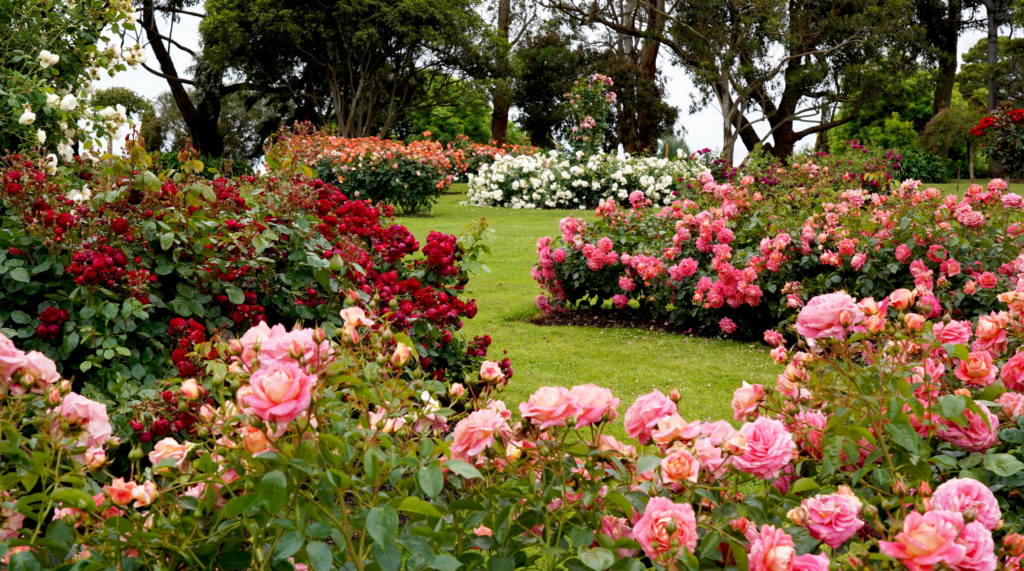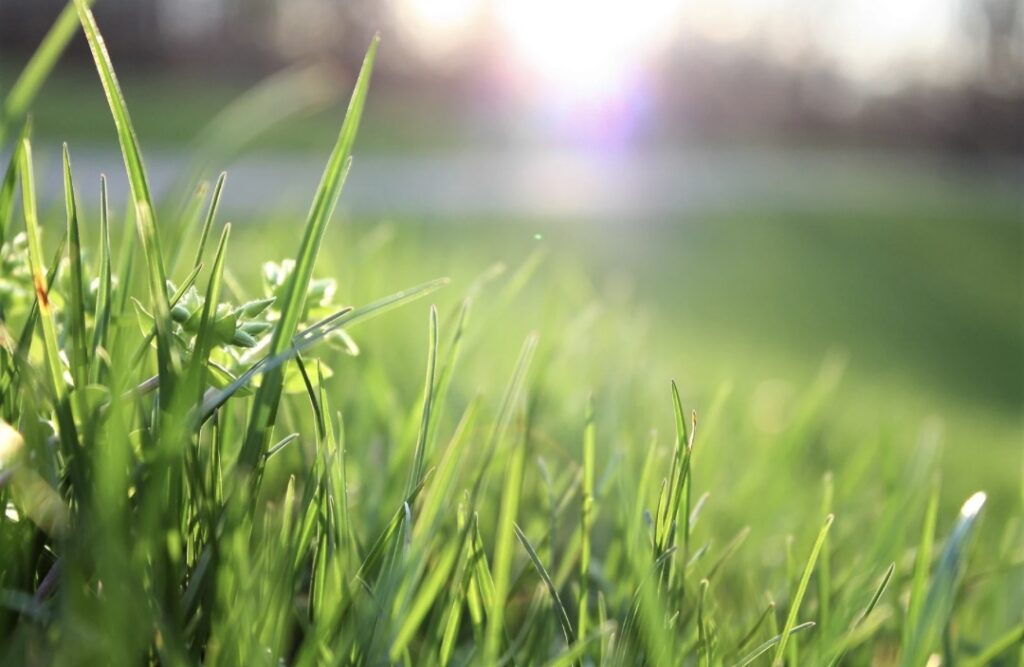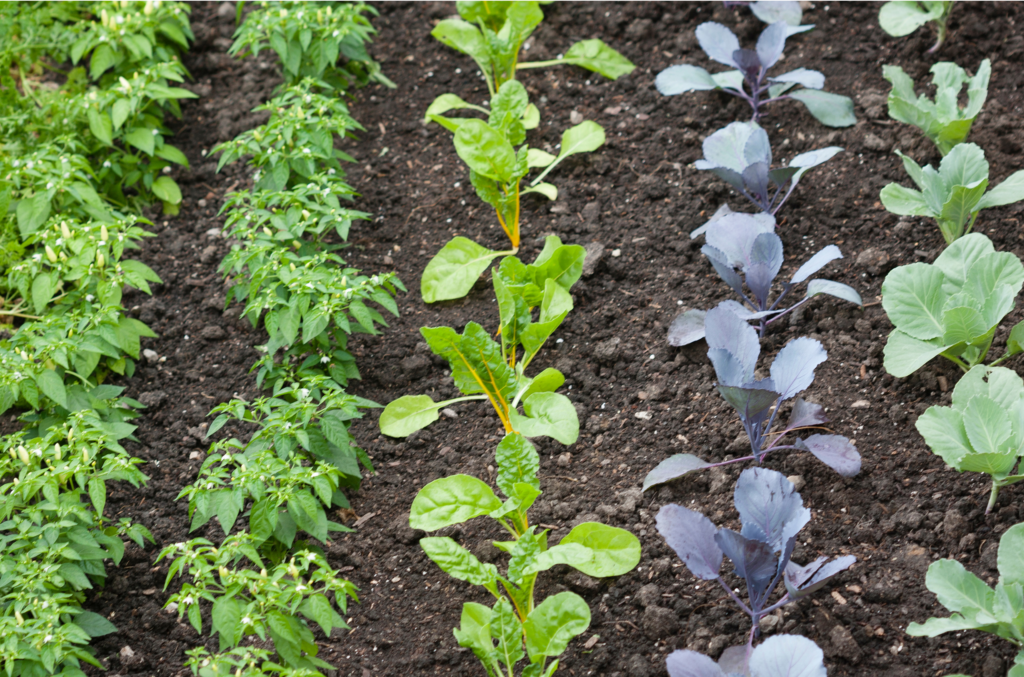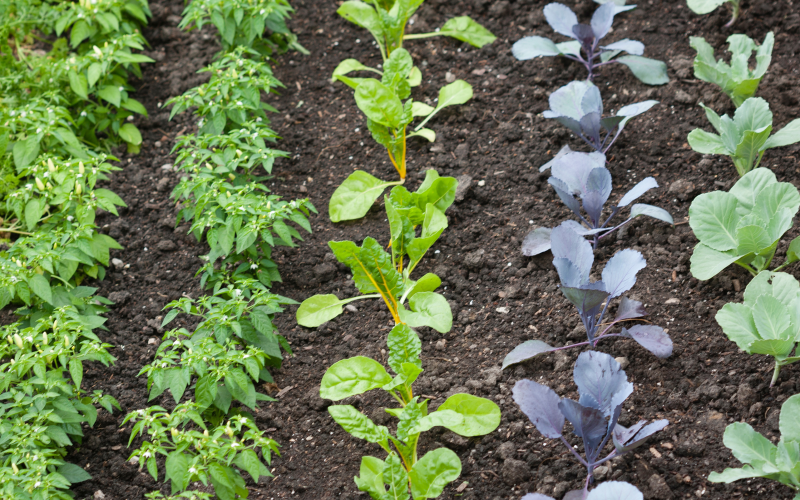How to Prepare Soil for Planting
Soil for gardening and preparation stands as the cornerstone of triumphant gardening, wielding a pivotal influence on plant prosperity and harvest abundance. It is important to prepare soil for planting to ensure robust plant health while fostering optimal growth and amplifying overall yield. Diverse techniques, from composting to tilling, cater to the distinct needs of various gardens, inviting intrigue into the realm of soil cultivation. Gardeners grapple with challenges like nutrient deficiencies and soil compaction, finding solace in the transformative power of meticulous soil preparation. In this foundational step lies the promise of flourishing gardens, where the soil becomes a vital ally in the quest for thriving, vibrant plant life.

Why Soil Preparation Matters
Effective soil preparation plays a pivotal role in shaping the growth and health of grass and plants, primarily through its influence on nutrient absorption and root development. Proper soil preparation, with an emphasis on optimal soil structure, creates an environment where plant roots can easily access essential nutrients, fostering efficient nutrient absorption. This heightened nutrient uptake directly correlates with improved plant health and productivity, while showing growth faster.
Moreover, when you prepare soil for lawn growth, the significance of aeration cannot be overstated. Adequate aeration ensures that plant roots receive essential oxygen, promoting robust root growth. Similarly, proper drainage, another crucial aspect of soil preparation, helps manage water levels around the roots effectively, further supporting root development when you prepare soil for planting or grass seed.
Conversely, poor soil preparation can lead to suboptimal root growth, resulting in reduced resilience and increased susceptibility to stressors. In contrast, meticulous soil preparation enhances nutrient-rich soil, fostering vigorous plant growth and overall productivity.
At Liquid Green we can help with comprehensive lawn care and expert guidance on soil preparation steps for hydroseeding and other lawn care questions.

How to Prepare Soil for a Garden
Step 1: Assessing the Area
Evaluating sunlight exposure, drainage patterns, and potential microclimates in your garden is crucial for plant selection. Preparing soil and understanding composition, texture, and existing vegetation further refines choices. Adequate sunlight ensures optimal growth, while drainage patterns prevent waterlogging. Microclimates influence temperature variations, impacting plant health. Assessing soil helps choose plants adapted to specific nutrient levels and moisture retention. Existing vegetation reveals ecosystem compatibility and potential companion planting. Overall, this comprehensive assessment tailors plant choices to your garden's unique conditions, fostering a thriving and harmonious botanical environment.
Step 2: Clearing Debris
Clearing the garden of rocks, weeds, and debris is essential when you prepare the soil for planting and lawn growth. Using garden tools like rakes or leaf blowers can help create a clean slate for planting, minimising resource competition and reducing the risk of pests and diseases. This process ensures a well-prepared foundation for successful plant growth. Additionally, composting organic debris enriches the soil with natural nutrients, promoting a healthier and more sustainable gardening environment. Our team can help you prepare your site and remove debris.
Step 3: Soil Testing
When you prepare soil, it is important to conduct a thorough soil test to understand nutrient levels, pH, and texture. Collect samples from various spots to ensure accurate results, as soil conditions can vary. This analysis provides insights for selecting appropriate amendments, creating optimal conditions for plant growth or soil for vegetables. Utilising a soil testing kit helps check pH levels and identify potential issues that may affect plants. This approach addresses deficiencies and imbalances, ensuring a customised and conducive environment.
Step 4: Pre-Soaking
Before planting, assess the need for watering based on soil moisture, weather conditions, and plant requirements. If the soil is excessively dry, pre-soaking is beneficial for easier tilling and amendment incorporation. Moist soil is more receptive to cultivation. However, avoid overwatering, as excessively wet soil can lead to compaction and negatively impact soil structure. Striking a balance when preparing soil and measuring moisture is key to fostering an environment conducive to plant growth, promoting optimal conditions without compromising soil integrity.
Step 5: Soil Amendments
Address soil deficiencies through soil testing and incorporating organic matter, compost, or fertilisers. Organic amendments like compost and manure enhance soil structure and nutrient content, while inorganic options like lime and sulphur adjust pH levels. Apply amendments evenly based on soil test results, ensuring proper integration. Avoid over-fertilisation, as it can harm plant health. The incorporation of amendments supports a balanced soil composition, fostering optimal conditions for plant growth, grass growth and when planting a vegetable garden.
How to Improve Garden Soil Based on Test Result
Incorporate recommended amendments during soil preparation, ensuring proper quantities. Thoroughly blend amendments into topsoil using a garden fork or tiller. Regularly monitor plant health and adjust future amendments as needed based on observed results. Enhancing your soil with organic matter, particularly compost, stands as the most impactful measure to promote soil health and fertility. The most effective action for improving garden soil is incorporating organic matter, with compost being the optimal choice.
| Soil Test Result | Nutrient Deficiency | Recommended Amendments |
|---|---|---|
| Low Nitrogen | Slow growth, yellowing leaves | Organic matter, compost, nitrogen-rich fertilisers |
| Low Phosphorus | Poor root development | Phosphorus-containing fertilisers, bone meal, rock phosphate |
| Low Potassium | Weak stems, poor fruiting | Potassium-rich fertilisers, wood ash, compost |
| Low pH (Acidic) | Nutrient lock, poor plant growth | Lime, wood ash, dolomite lime |
| High pH (Alkaline) | Reduced nutrient availability | Elemental sulphur, acidifying fertilisers, organic matter |
| Low Organic Matter | Poor soil structure, drainage issues | Compost, well-decomposed organic matter, cover crops |
| Imbalanced Macronutrients | Uneven growth, leaf discoloration | Balanced fertilisers, tailored to specific nutrient needs |
Step 6: Tilling
Efficiently prepare the soil for planting by using a tiller to break up compacted soil, seamlessly integrating amendments for a uniform mixture. Tilling enhances aeration, drainage, and nutrient distribution, fostering robust root development for healthy plants. To maintain optimal soil structure, avoid excessive tilling, striving for a crumbly texture. These tips ensure that the soil preparation process strikes a balance, creating an environment conducive to plant growth without compromising the integrity of the soil, ultimately to prepare the soil for planting.
Step 7: Creating Raised Beds
Raised beds help establish adequate depth for root expansion and establish a solid foundation for a thriving and productive garden. To create raised beds for planting, select a sunny location with good drainage, outline the bed boundaries, remove sod, and level the ground. Construct sturdy frames using materials like wood or concrete blocks, then fill them with a mix of garden soil, compost, and other amendments. Smooth the soil surface, ensuring its level and ready for planting. These strategic considerations while preparing soil for a garden, are pivotal for gardening excellence, providing a comprehensive approach to maximise the overall health and vitality of your plants within the raised bed setting.
Step 8: Mulching
Prepare soil for planting success by applying a layer of organic mulch, a versatile solution for conserving moisture, suppressing weeds, and regulating soil temperature. Mulching, with materials like straw, wood chips, or bark, enhances water retention, minimises weed competition, and shields soil from extreme temperature fluctuations. Tailor mulches to specific plant needs; compost or well-rotted manure is ideal for vegetable gardens. For large-scale projects, consider hydro-mulching, available through hydroseeding services like Liquid Green. Leave space around plant stems, prevent rot, and replenish mulch as needed for a resilient environment.
How to Prepare Soil for a Garden
Step 1: Assessing the Area
Evaluating sunlight exposure, drainage patterns, and potential microclimates in your garden is crucial for plant selection. Preparing soil and understanding composition, texture, and existing vegetation further refines choices. Adequate sunlight ensures optimal growth, while drainage patterns prevent waterlogging. Microclimates influence temperature variations, impacting plant health. Assessing soil helps choose plants adapted to specific nutrient levels and moisture retention. Existing vegetation reveals ecosystem compatibility and potential companion planting. Overall, this comprehensive assessment tailors plant choices to your garden's unique conditions, fostering a thriving and harmonious botanical environment.
Step 2: Clearing Debris
Clearing the garden of rocks, weeds, and debris is essential when you prepare the soil for planting and lawn growth. Using garden tools like rakes or leaf blowers can help create a clean slate for planting, minimising resource competition and reducing the risk of pests and diseases. This process ensures a well-prepared foundation for successful plant growth. Additionally, composting organic debris enriches the soil with natural nutrients, promoting a healthier and more sustainable gardening environment. Our team can help you prepare your site and remove debris.
Step 3: Soil Testing
When you prepare soil, it is important to conduct a thorough soil test to understand nutrient levels, pH, and texture. Collect samples from various spots to ensure accurate results, as soil conditions can vary. This analysis provides insights for selecting appropriate amendments, creating optimal conditions for plant growth or soil for vegetables. Utilising a soil testing kit helps check pH levels and identify potential issues that may affect plants. This approach addresses deficiencies and imbalances, ensuring a customised and conducive environment.
Step 4: Pre-Soaking
Before planting, assess the need for watering based on soil moisture, weather conditions, and plant requirements. If the soil is excessively dry, pre-soaking is beneficial for easier tilling and amendment incorporation. Moist soil is more receptive to cultivation. However, avoid overwatering, as excessively wet soil can lead to compaction and negatively impact soil structure. Striking a balance when preparing soil and measuring moisture is key to fostering an environment conducive to plant growth, promoting optimal conditions without compromising soil integrity.
Step 5: Soil Amendments
Address soil deficiencies through soil testing and incorporating organic matter, compost, or fertilisers. Organic amendments like compost and manure enhance soil structure and nutrient content, while inorganic options like lime and sulphur adjust pH levels. Apply amendments evenly based on soil test results, ensuring proper integration. Avoid over-fertilisation, as it can harm plant health. The incorporation of amendments supports a balanced soil composition, fostering optimal conditions for plant growth, grass growth and when planting a vegetable garden.
Professional Soil Preparation Services: When to Consider
Discover the unparalleled expertise of Liquid Green, your premier professional soil preparation service. Trust us to prepare soil for planting, elevate your gardening or landscaping ventures with precision and efficiency.
Consider hiring professional services:
- If your soil has complex issues such as severe compaction, high acidity, alkalinity, or imbalances in nutrient levels.
- For extensive gardening areas, landscaping projects, or agricultural ventures - professionals have the equipment and experience to efficiently handle large-scale soil preparation, saving time and ensuring uniform treatment.
- If you have limited time for soil preparation due to tight schedules or seasonal constraints.
- If you are unfamiliar with soil testing, analysis, and the selection of appropriate amendments.
- If you plan to cultivate plants with specific soil requirements, such as rare or exotic species.
- If you've attempted DIY soil improvement without success or if issues persist.
Count on Liquid Green's expertise to address diverse soil challenges with precision. We specialise in crafting tailored solutions for successful soil preparation. From tackling compaction to nutrient balancing, our team ensures your soil receives the customised care it deserves.
How to Improve Garden Soil Over the Winter
As the first snowfall approaches, it is important to ensure your garden thrives during the winter months and blossoms come spring. With the help of our team, you can save time and money by preparing your lawn and garden to live throughout the cold Canadian winters. A beautiful garden shouldn't be a chore every year! Discover how to enhance your garden soil over the winter with these proactive steps:
Mulching Before Snowfall:
Insulate the soil by mulching before the first snowfall, reducing temperature fluctuations, preventing erosion, and gradually enriching the soil with organic matter.
Cover Cropping:
Plant winter cover crops like winter rye before snowfall to protect the soil, prevent nutrient leaching, and improve soil structure for optimal planting in spring.
Winter Covers:
Shield garden beds with burlap or frost blankets before winter, retaining soil moisture, moderating temperature extremes, and safeguarding plants.
Pre-Snowfall Composting:
Spread well-composted organic matter over garden beds before snowfall, allowing it to integrate into the soil as the snow melts, enriching it with nutrients for the upcoming planting season.
Cold Frames or Row Covers:
Install cold frames or row covers for selected beds, creating a microclimate that provides positive results for environment, warmth and protection, allowing plants to flourish during milder winter periods.
Implementing these strategies not only improves garden soil over the winter but also ensures a thriving garden come spring. Our team provides insights on how to prepare soil for gardening and optimise it for planting and effective erosion control solutions. Prepare your soil for planting success, and watch your garden bloom with vibrant vitality.

How Do You Compost in Cold Winter?
When it comes to winter composting, insulating your compost is crucial to prevent freezing and ensure uninterrupted decomposition. Utilise specialised winter composting practices to sustain the process in colder temperatures. Professional composting services, such as those provided by Liquid Green, efficiently manage the entire composting journey. Embracing cold composted materials in your soil contributes significantly to its health and vitality when thoughtfully incorporated into your gardening routine and planting a vegetable garden.
Advanced Techniques for Soil Preparation
Double Digging
This technique involves loosening and turning over soil in two layers to a spade's depth, is a dynamic approach to prepare the soil for planting and enhance garden soil. This method breaks up compacted layers, improving garden soil structure, and promotes better aeration, facilitating root penetration. Highly versatile, double digging is suitable for various garden settings, making it especially effective in small plots or areas with compacted soil. Incorporate double digging into your gardening routine for flourishing plants and a thriving garden.
Cover Cropping
Prepare soil for planting through cover cropping: this involves planting specific crops to shield and fortify the soil during fallow periods. This practice enriches soil fertility and structure while curbing erosion, nutrient runoff, and weed growth. Additionally, it attracts beneficial insects, fostering a balanced ecosystem. Ideal for both large and small gardens, especially during fallow periods, cover cropping is also beneficial in orchards, vineyards, and open fields, serving as a versatile strategy to enhance overall soil health and vitality while improving garden soil.
Precision Planting Beds
Implementing organised layouts is a strategy for maximising plant placement and promoting space utilisation. This ensures each plant receives the necessary resources. Alongside this, it is important to prepare the soil for planting for the success of gardening endeavours. Properly preparing soil for planting ensures an optimal foundation for plant development. This approach proves effective in both small and large gardens, providing adaptability for various settings. Whether in raised beds, container gardening, or any space where precise plant placement is crucial.
Soil Solarization
Utilising solar energy as its ally, soil solarization is a technique that effectively heats and sterilises the soil, presenting a natural approach to cultivating healthier garden soils. The benefits are twofold: controlling soil-borne pests, pathogens, and weed seeds while simultaneously reducing reliance on chemical interventions. Ideal for open fields, large garden areas, and plots facing persistent pest issues, this method shines particularly in regions blessed with abundant sunlight, making it a sustainable and eco-friendly solution for fortifying and improving garden soil health.
No-Dig Gardening
No-dig gardening, emphasising minimal disturbance to soil structure during planting, safeguards the delicate balance of the earth, making it an ideal practice for nurturing soil for vegetable gardens and general gardening. This method not only preserves soil structure and biodiversity but also reduces soil erosion, fostering a sustainable, natural ecosystem. Suitable for all garden settings, from small urban plots to vast rural landscapes, no-dig gardening emerges as an eco-conscious choice. Particularly advantageous in areas with sensitive ecosystems, it promotes sustainable and low-impact gardening practices, ensuring healthy and resilient soils for gardening alike.

Choosing The Best Soil for Vegetable Gardens
Sandy Soil
Characteristics:
- Well-Draining: Sandy soils feature larger particles, promoting efficient drainage.
- Quick Warming: With a tendency to warm up swiftly in spring, they create an advantageous environment for early-season planting.
- Low Nutrient Content: However, these soils are inherently low in nutrients, necessitating strategic enhancements.
Suitability for Canadian Gardens:
- Ideal for Root Vegetables: Sandy soils prove well-suited for root vegetables and plants that thrive in drier conditions.
- Best for Vegetable Gardens: Considered among the best soil for vegetable gardens, they cater to the specific needs of vegetable cultivation.
Improvement Tips:
- Organic Matter Addition: Introduce organic matter, such as compost, to improve water retention and enhance nutrient levels.
- Mulching Benefits: Utilise mulch to regulate temperature, reduce water evaporation, and fortify overall soil health.
Clay Soil
Characteristics:
- Fine Particles: Clay soils, ideal for a vegetable garden, consist of fine particles, contributing to a good nutrient content.
- Compaction Prone: Prone to compaction, negatively impacting drainage, making preparing soil crucial.
- Slow Warming: These soils warm up more slowly in spring compared to other soil types.
Challenges for Canadian Gardens:
- Compaction Issues: Compaction in clay soils may hinder root growth and drainage, emphasising the importance of preparing soil meticulously.
- Considered Heavy Soil: The heavy nature of clay soils complicates gardening tasks and plant development, necessitating specific soil preparation strategies.
Improvement Techniques:
- Incorporate Organic Matter: Enhance drainage and prepare soil for a vegetable garden by incorporating organic matter into clay soils.
- Raised Beds: Utilise raised beds to prevent compaction and improve aeration, addressing the challenges posed by clay soils in Canadian gardens.
Loamy Soil
Characteristics:
- Well-Balanced Mixture: regarded as the best soil for a vegetable garden, features a harmonious blend of sand, silt, and clay.
- Versatility: this soil for gardening is ideal due to excellent water retention and drainage, ensuring optimal conditions for plant growth.
- Balanced Composition: The balanced composition is particularly beneficial for diverse plant species.
Benefits for Canadian Gardens:
- Vegetable Support: Considered the best for gardening, supporting a variety of vegetables, thriving due to balanced composition.
- Fertile and Well-Structured: Fertile and well-structured, these soils provide an ideal environment for robust plant root development in Canadian gardens.
Maintenance and Enhancement:
- Regular Compost Addition: Maintain nutrient levels by regularly adding compost to loamy soils, ensuring they remain the best soil for a vegetable garden.
- Mulching Benefits: Enhance soil structure and conserve moisture by mulching.
Silty Soil
Characteristics:
- Fine Particle Size: with particles smaller than sand but larger than clay, present unique characteristics.
- Moisture Retention: This soil for gardening retains moisture well and is often fertile, offering a good environment for growth.
- Compaction Prone: Despite their benefits, silt soils are prone to compaction, demanding careful attention.
Suitability for Canadian Gardens:
- Versatility: Suitable for a variety of vegetables, especially those benefiting from good moisture retention, making them versatile vegetable garden soil.
- Compaction Concerns: Attention is required to prevent compaction issues in silt soils.
Improvement Tips:
- Incorporate Organic Matter: Enhance drainage and prevent compaction by incorporating organic matter into silt soils.
- Regular Aeration: Regularly aerate the soil to mitigate compaction risks, ensuring the continual health and fertility of silt soils in Canadian gardens.
Chalky (Calcareous) Soil
Characteristics:
- Alkaline Composition: Chalky soils, ideal as soil for vegetable gardens, are characterised by high calcium carbonate levels, making them naturally alkaline.
- Good Drainage: These soils for gardening, drain well but may pose challenges for acid-loving plants.
- Nutrient Availability: Some nutrients may be less available in chalky soils, necessitating attention in gardening practices.
Suitability for Canadian Gardens:
- Vegetable Suitability: Chalky soils for vegetable gardens are suitable, especially for vegetables that tolerate alkaline conditions, such as brassicas.
Improvement Techniques:
- Organic Matter Amendment: Enhance nutrient availability in chalky soils, chosen as soil for gardening, by amending them with organic matter.
- Plant Selection: Optimise gardening success by selecting vegetables that naturally thrive in alkaline soil conditions, ensuring the continual health and fertility of chalky soils in Canadian gardens.

Final Words
Prepare soil for planting with precision, ensuring success in every gardening season. Align practises with seasonal rhythms, optimising your vegetable garden soil and growth potential. Revel in the joy of planting, nurturing, and witnessing vibrant growth. For expert assistance, trust Liquid Green, a reliable resource committed to your gardening journey's success. Cultivate not just plants but a thriving connection with your garden, embracing the beauty of each season.

